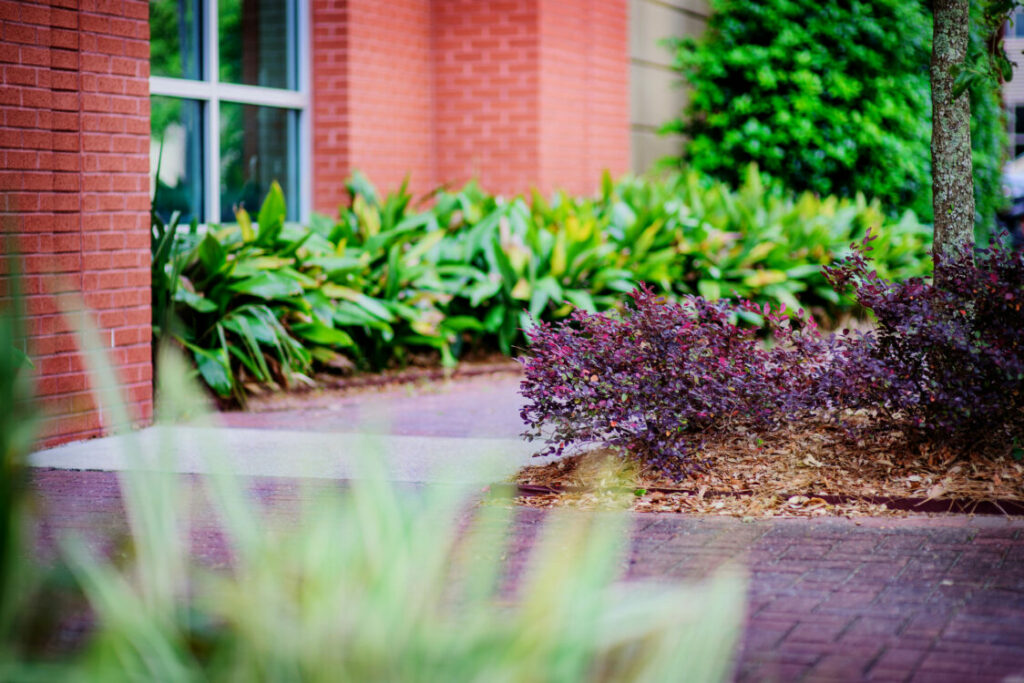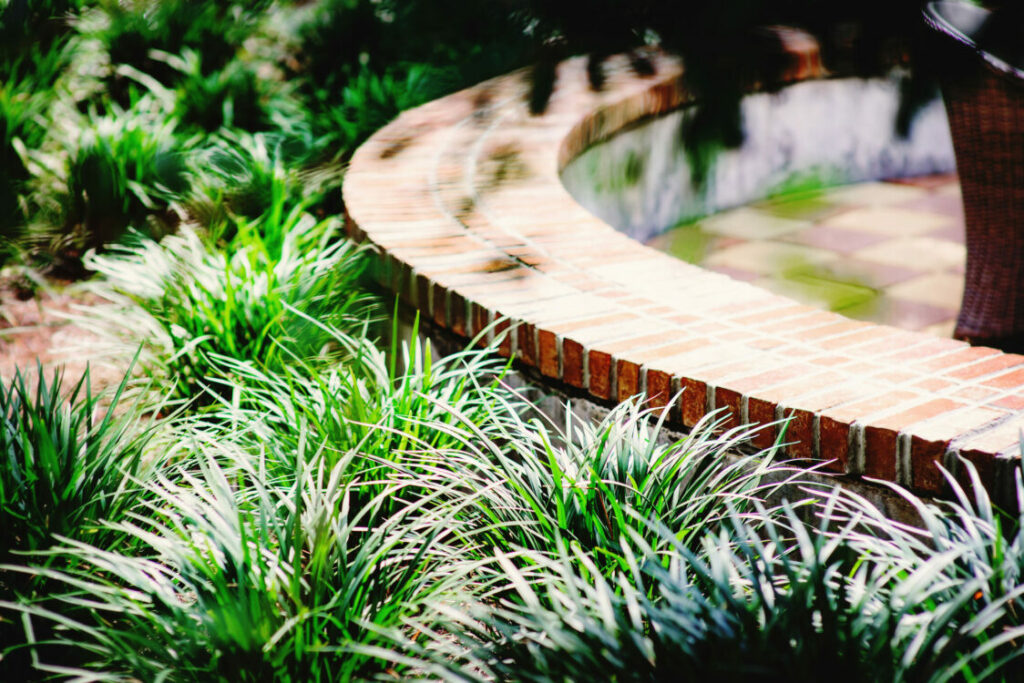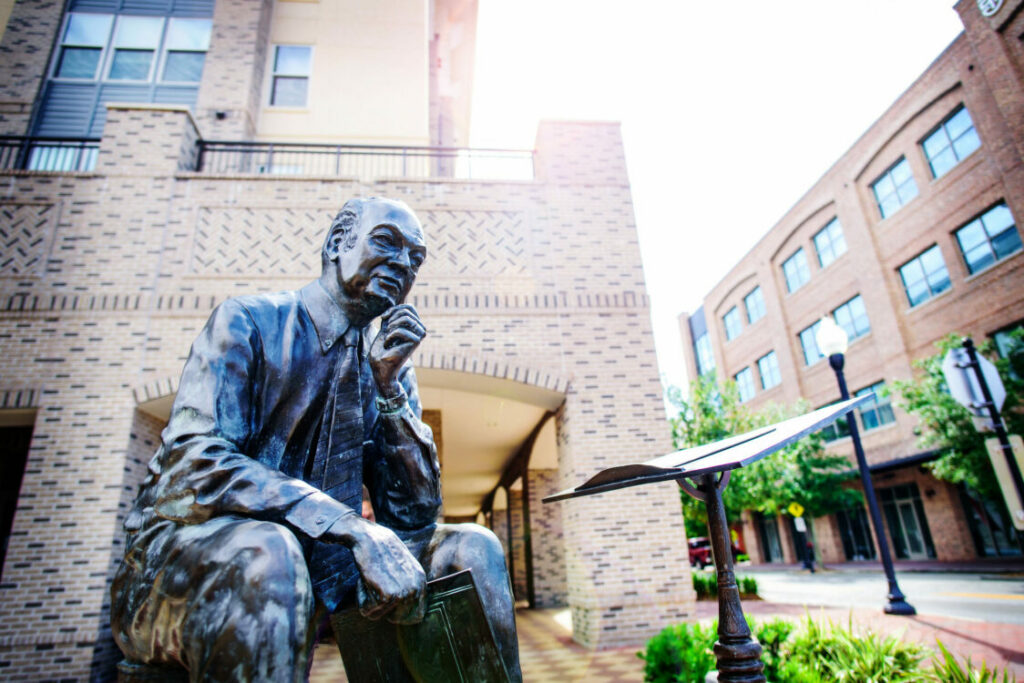Golfweek Features Jerry Pate Design and Teeth of the Dog - Read More
The winter months may be a tempting time to push commercial landscape architecture thoughts to the back of your mind, but they are really an ideal time to plan and prepare for spring. In particular, winter is a great time to take a good hard look at your landscape to see what needs to be fixed, what could be improved and what projects should be added to the budget.
We’ve talked about the benefits of commercial landscape design over the past couple of months, both for retail and corporate environments. In short, effective landscape architecture helps to attract customers and improves employee performance.
Make a Critical Evaluation

It’s not difficult to become complacent about landscaping, though. A striking landscape may capture your attention every time you pull into the lot, but a lackluster one is easy to pass by without a second thought. That’s why it’s important to set some time aside to perform a critical evaluation. Try to view the landscape architecture from the perspective of a visitor or new employee. Is it captivating or instantly forgettable? Does it suggest an attentive attitude or lack of care? Is it encouraging visitors to come inside or turning them away?
A Good Time for Landscape Architecture Cleanup
If there’s a need for landscape cleanup, it should be at the top of the to-do list in the winter months. Cleanup is one of the most cost-effective improvements, and getting it done early will take some of the load off of the spring planting season. Keep an eye out for weeds, dead foliage, or debris in flower beds and planters. It’s also a good time to assess whether pruning is required. The gradual growth of trees and shrubs may go unnoticed until we take a step back and see that they are blocking signage or other landscape elements.
And for Landscape Architecture Planning
Winter is also a good time to plan for placement of annuals when the days get longer and the weather warms. It takes a little imagination, but try to envision where splashes of color would make the most impact. Look for areas that are not necessarily good for larger plants, but could use a little beautification.
Don’t Neglect the Hardscaping and Irrigation

Hardscaping should be evaluated, too. Are sidewalks, seating, steps, and curbs in good condition or are there some cracks that need to be repaired? Is gravel contained where it should be and weed-free? Dirty cement walks in particular are easy to overlook unless you really take the time to give them a critical inspection. Now is a great time to pressure wash and make repairs with less risk of damage to plants and beds.
Irrigation systems should also be inspected before the growing season begins. The winter months can wreak havoc on irrigation systems when freezing temperatures occur. In warmer climates, systems may not be in use as much during winter months, which allows damage to go undetected. A thorough inspection now will provide time for repairs before beds are planted, eliminating the need to dig them up later in the season after plants are in place.
Plan for Landscape Architecture Enhancements
Evaluating your commercial landscape should not be entirely focused on maintenance and repair, however. Enhancements and improvements should also be considered. Take a careful look at not only whether your landscape architecture is aesthetically pleasing, but whether it is working towards your overall goals. Does vegetation highlight your signage or overshadow it? Are pathways leading visitors in the right direction? Are relaxation areas inviting and comfortable? Is the landscape well-lit in the evening? Answers to these and similar questions can help you decide what areas should be on the enhancement plan.
Enhancing your landscape architecture will typically involve a multi-year plan. Structural changes like walkways, walls, buried infrastructure, and other hardscape additions should be early on the plan, since the equipment required for installation will usually end up damaging turf and planting beds. Trees and perennials should be next to give them the most time to mature. Turf and annuals round out the schedule.
Slow and Steady Progress Is Key

Keep in mind that it takes a while for a great landscape to mature. Gardeners frequently use the adage, “sleep, creep, and leap” to describe the first three years after planting a new perennial. “Sleep” refers to the fact that plants typically seem to do very little in terms of growth during the first year. Don’t be discouraged if a new plant doesn’t appear to flourish initially—the real growth is happening in the root system where we cannot see it. During the second year, plant growth will begin to “creep” forward as roots have become better established. The beauty of a plant will often burst forth in the third year as they “leap.”
Landscape Architects Can Be an Invaluable Resource
Whether during your evaluation or as a partner in making the enhancements happen, a landscape architect can be invaluable. They help you to get the most from your commercial landscape architecture. When choosing a landscape architect, look for companies that have been around for a while. They will be well-versed in your local climate and plant options. Ask for examples of properties they have served and what their role in the design, planning, and maintenance has been. Try to get a feel for the account management and communication process for both planning and maintenance stages of the project.
Spring is around the corner and we are looking forward to all the beauty that it brings. There is work to be done to make commercial landscapes the best they can be, though. Get started on a captivating 2024 now!

